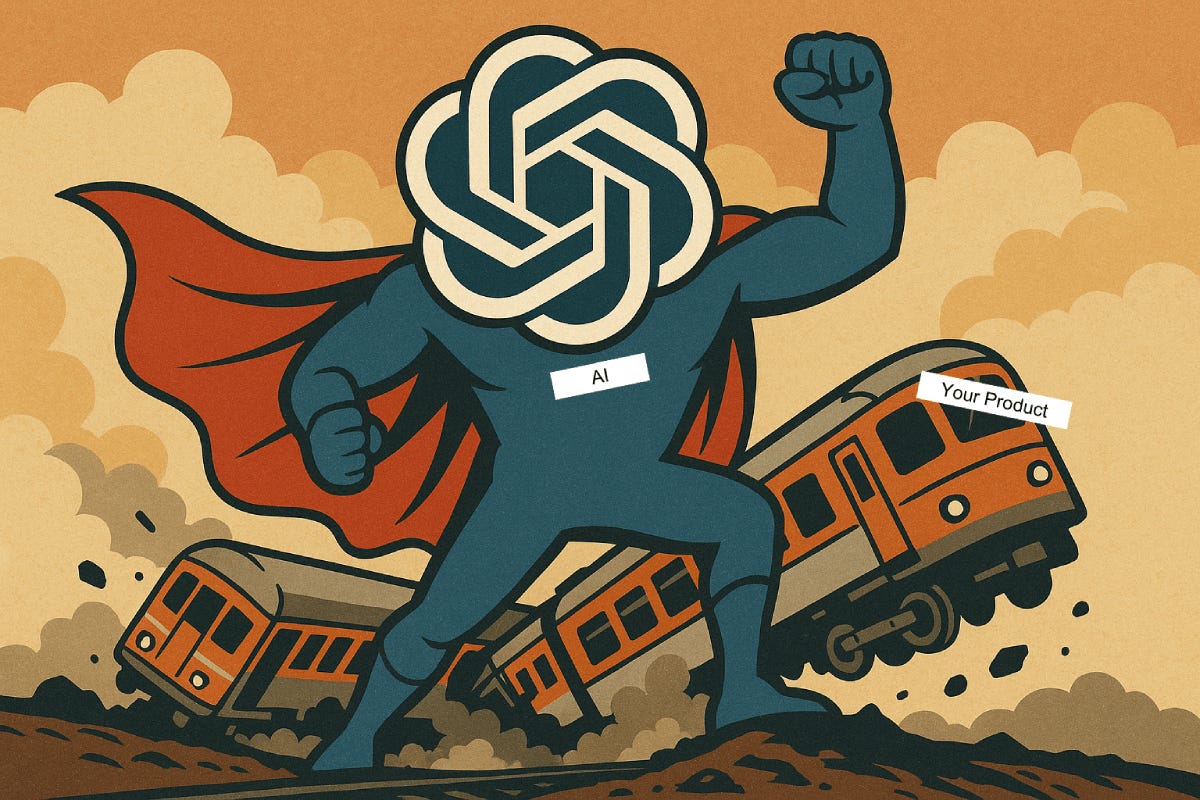How to Build a Roadmap that withstands the disruption of AI
If I could convince product leaders everywhere to do one thing right now, it would be to build a roadmap prioritized around user problems, not outputs or metrics.
Is it just me, or is it impossible to have a conversation with someone without it somehow becoming about AI? Just a few years ago, the dreaded 'A' word wasn't even part of most people's vocabulary, let alone the topic of the day.
Now it's AI this, and AI that. If your CEO isn't asking for AI-enabled product features, your customers surely will, and then there's the impending dread of finding out from an investor that your competitor came out with their own AI thing last week.
There is a lot of hype right now, I know. Some of you may think your product has nothing to do with AI and are reading or listening, thinking this is a total waste of time.
The truth is, AI is reshaping the landscape of product management (and every other role) faster than we've possibly ever seen. And it's not just about how you work. It's about what you work on, how you decide what to work on, and whether your current roadmap makes sense in a rapidly changing world.
Just two days ago, OpenAI released version 4.1, which performs significantly better in several areas and at a reduced cost. Suppose the previous model was too expensive for your needs or couldn't handle your tasks; that may no longer be a problem. If 4.1 doesn't meet your requirements now, wait a few weeks; someone will release another model that might.
When things change so rapidly, how do you plan for the future?
I've written before about Now/Next/Later and Outcomes-Based roadmaps:
Now/Next/Later: Great for staying flexible. Prioritize in Kanban-style buckets and keep things moving.
Outcomes-Based: Set goals like "increase conversion by 5%" and give teams autonomy on how to achieve them.
But here's the problem: In a world where goals shift every quarter (or week), how do you even know what will matter six months from now? Metrics are helpful, but they can quickly become outdated. It's never been more critical to stay focused on delivering value by solving real user problems.
Enter the Problem-Based Roadmap
If I could convince product leaders everywhere to do one thing right now, it would be to build a roadmap prioritized around user problems, not outputs or metrics. Many founders created their products to solve a real problem they saw. Somehow, a lot of us lost track of this point.
We need to go back to first principles and understand why your product or service exists in the first place and what problem it solves for users today. As I've taken on more side projects, I'm reminded of this again and again: Quarterly OKRs be damned; if you're not solving a real problem for real people, you're not creating long-term value.
So here's the bottom line: focus on the problem, but don't get locked into a solution because if AI can't do it today, it might in a week. And if you can leverage AI to help your customers solve their problems, great! But be prepared; they can, too, and they might not need you.
Why a problem-first approach works
A problem-based roadmap gives you room to adapt as the world shifts:
Swap solutions in and out without blowing up your plan
React to new AI capabilities, competitive changes, or market dynamics
Align teams on the why, not just the what
And you can still layer structure on top of it. Start treating your roadmap like a Now/Next/Later Kanban, but for problems. What are the most pressing user problems we're solving now? Which ones are next? And which are worth paying attention to?
It's the same strategy for backlog management I've recommended for years: prioritize a few steps ahead and stay light on the details further out. In today's landscape, trying to spec work that's 3–6 months away is a complete waste of time. The tools will have changed by then, but it’s less likely the problem has (unless it's no longer a problem at all).
The Roadmap Reset
Traditional roadmap models don't hold up when everything is moving this fast. You need something that reflects the messiness of real-world decisions and the speed of change.
Let's recap the approach:
Ditch the fixed timeline: Adopt Now/Next/Later thinking.
Anchor everything to user problems: Not outputs, not even outcomes.
Use AI as a multiplier, not a crutch: It won't save bad ideas.
Re-evaluate constantly: Your best guess today might be wrong tomorrow.
Embrace the lone-wolf mindset: Be full-stack. Build, test, learn, repeat.
Because in this moment of rapid transformation, it's not about having the perfect plan. It's about staying close to the problem and being ready to change your approach the moment the world shifts again.
Let me know in the comments what you’re doing to keep your product roadmap flexible in a rapidly changing landscape. Not just when it comes to AI but also with tariffs and the rest of the uncertainty in the world today.





